By Al Cohn
Maintaining proper tire inflation pressure is a goal for every fleet manager. When the proper air pressure is correctly set, tire removal miles, fuel economy and retreadability all are maximized. Air carries and supports vehicle loads; in a perfect world, depending on the specific load, the inflation pressure should be set accordingly.
If a loaded tire is carrying 6,000 pounds when run on the steer position, then the recommended tire inflation is 110 PSI for the common 295/75R22.5 low profile tire size. Load-inflation tables state the designed tire pressure defined for given tire loads. These tables are readily available on all the tire companies’ websites.
However, be careful when reading these charts, since the recommended pressures vary depending on tires being run as singles or as duals.
Since it is totally impractical to change tire pressures every time the trailer load changes, the recommended tire pressure setting must be based on the worst case load scenario. Even though the average load may be significantly lower than the worst case load, it still is very important to set the pressure based on that worst case load scenario.
Fleet tire managers typically ask how frequently they should be checking tire pressures—and why tires lose so much air during the course of the year. There really are only four reasons why tires lose air:
1. Osmosis of air through the tire casing can lead to a loss of 1 to 3 PSI per month, depending on the specific tire make and model. The type of compounds used in the manufacture of the tire can have a big impact on osmosis. The composition and gauge of the tire innerliner compound also plays a significant role in osmosis. Losing 2 PSI per month does not sound like very much, but after 12 months the tire would be considered “flat” and should be removed from service. If a tire is measured to be 20% under the fleet’s specification, the industry recommendation is to remove the tire from service, dismount and determine exactly what is going on with the tire.
2. Slow leaking punctures in the tread are the leading cause of tires losing air. A nail embedded in a tire’s groove may cause a loss of 2 or 3 PSI per day, not 2 or 3 PSI per month as with osmosis. You can check the tire pressure before the vehicle leaves the yard in the morning, yet pick up a nail just a few minutes later.
3. Leaking valve stems and cores are another cause of low tire pressure. Over-tightening valve cores can lead to loss of air. There actually is a specification of 4 inches per pound of torque on a tire valve core. Valve core pre-set torque wrenches are available through tire supply companies.
4. Finally, tires lose air through impact breaks. Running over large objects and hitting the curbs on those right-handed turns can lead to air loss, which is usually sudden and will lead to an emergency roadside service call.
So, how frequently should a fleet be checking tire pressures? It depends on the type of service vocation. If vehicles see a high volume of mixed service and are on unpaved roads, then tires need to be checked a lot more frequently than tires running on vehicles that are going coast-to-coast over the interstates.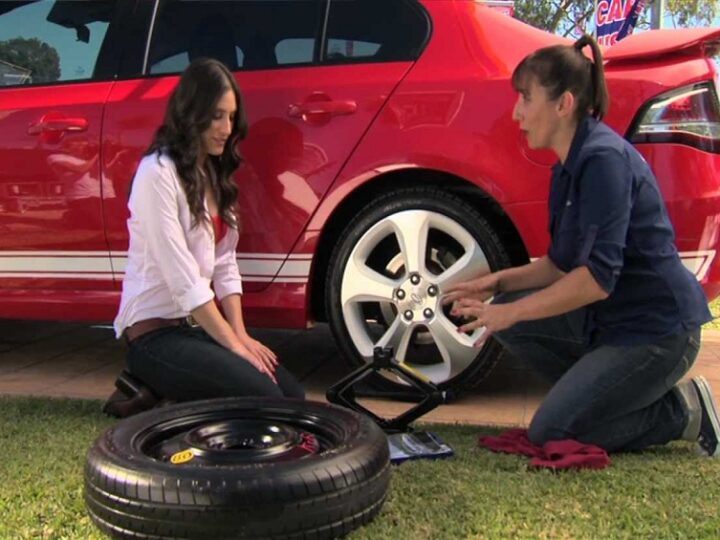
If the vehicles are coming back home every night and travel on good roads, then a once a week check of tire pressures is the standard recommendation. However, it always is a good practice to check tire pressures as often as is practical.
Having said that, it is fair to note that the drawback with checking tire pressures frequently is that it just takes time. Checking the pressure of 18 tires with valve caps on one rig can take up to 15 minutes to complete.
Finally word of advice—always use a pressure gauge that has been calibrated. Some stick gauges are adjustable by turning a screw located in the bottom of the gauge. Many truck stops have air inflation calibration stations to check your pressure gauges. Even brand new pressure gauges out of the box are only accurate to +/- 3 PSI, so it is a good idea to check your gauges for accuracy on a regular basis.
Tire pressure has a significant influence on vehicle performance, durability and fuel economy. However, most people face the problem of air leaks that reduce wheel pressure.
However, most people face the problem of air leaks that reduce wheel pressure.
One of the issues that people are very concerned about is brand new tire losing air pressure. Normally, the degree of escape is related to tire life. With new tires, it is quite rare unless it is experiencing some external impact.
Let’s explore the following article to understand better the causes and how to fix the pressure drop in new tires.
Why Is Tire Pressure Important?Tire PressureTire pressure is understood as the pressure of air compressed inside the tire. This one dramatically affects the operating characteristics of the new tire.
More specifically, inflating the new tires at the correct pressure helps the wheelchair roll on the road with the full tread. The contact surface is spread evenly, thereby helping to wear the surface evenly.
Besides, a set of properly inflated new tires also brings direct benefits to the user, such as optimal smoothness, stable cornering ability, shortest braking distance, and fuel economy.
Pressure is significant to the use of your car because it directly affects the performance, durability, and optimal function of the brakes and suspension systems equipped on the vehicle.
At the same time, maintaining the correct pressure helps you maintain safety, vehicle load, wheel life, and fuel consumption.
Therefore, you need to check your new tires regularly to ensure the pressure is always at the most stable level.
Why Does Your Brand New Tire Lose Air Pressure And Leak Air?Next, to better understand the condition of new tires leaking air, let’s learn about some of the causes of this condition.
Loss of air pressureThe first cause is the loss of air pressure. Here are some of the reasons.
Wheel problemAlthough very careful, when you just change a new tire, the risk of wheel failure can occur. The common problem is that your tire valve stem is of poor quality.
When changing a new tire, it is better to replace the valve with a new one.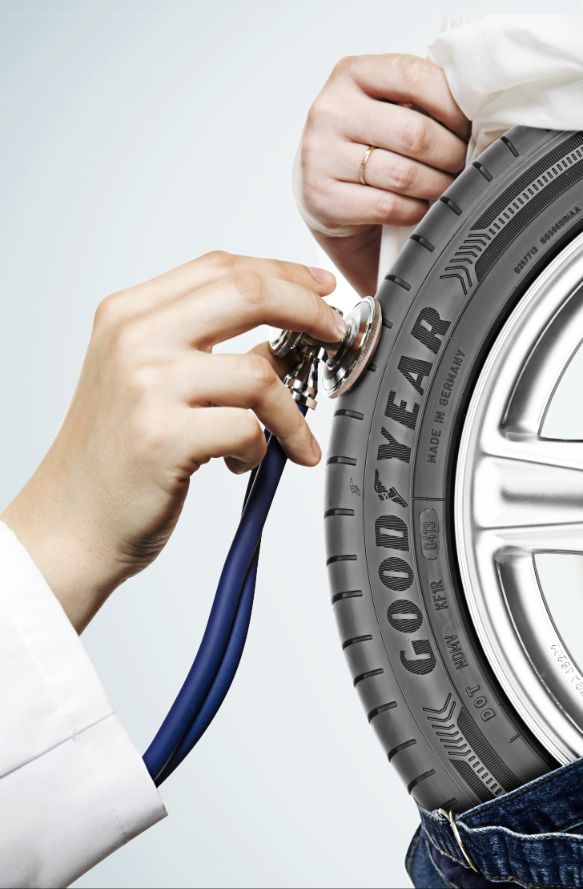 Also, don’t forget to check it regularly to determine if it’s working correctly. Besides, if the valve core is too tight, it can also cause air to leak.
Also, don’t forget to check it regularly to determine if it’s working correctly. Besides, if the valve core is too tight, it can also cause air to leak.
Another problem is that damaged, warped, deformed wheels due to impact also cause pressure to drop.
Tire damageDamageIn addition to the wheels, problems related to tires include rolling a nail or sharp object that punctures the new tire damaged, broken, and reduces the pressure quickly.
When moving on the road, you need to pay attention to the terrain. You accidentally go into potholes at high speed; it can also cause new tires to leak air.
Temperature changeMoreover, the change in weather is also the reason why the pressure of newly purchased tires decreases.
When it’s cold, the air contracts, and the pressure level drops faster. So, you need to regularly check your wheel in the winter to maintain it at the right level.
Gas leakGas leaks can also be the cause of brand new tires losing tension. Leaking gas causes a drop in tire tension, and this can happen slowly or very quickly.
Leaking gas causes a drop in tire tension, and this can happen slowly or very quickly.
If there is a problem during the assembly process that causes the rims and tires not to fit properly, it will also cause air to leak faster.
Valve is brokenValve is brokenSimilarly, if you buy a new car but use an old valve or a new valve that comes with a damaged tire, it will also cause air to escape.
Usually, this speed is relatively slow. Therefore, it will be difficult to detect now but check the valve regularly to limit this situation.
Temperature change – VariationThe temperature change will also cause the air in the wheel to escape. The molecules are often more concentrated when it is cold, shrinking, reducing tension. Statistically, every 10°F drop in temperature reduces stress by about one psi.
Improper sealFinally, if you don’t seal the new tires properly, it can easily lead to leaks.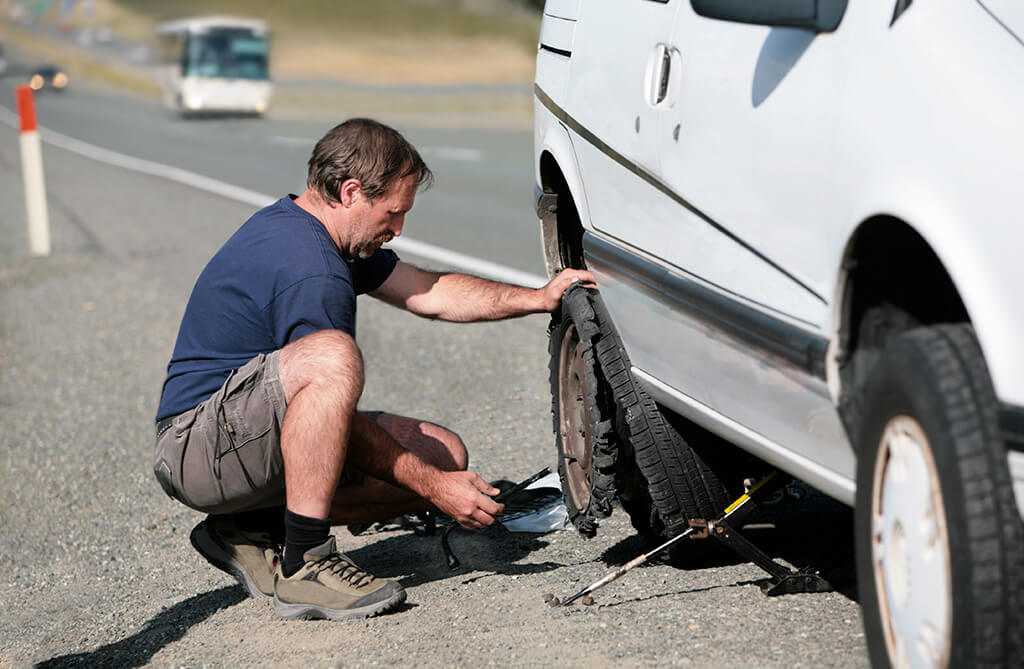 Besides, not cleaning the seal not or adequately removing the label also causes the wheel not to fit together, and this creates a space for air in the new tire to escape.
Besides, not cleaning the seal not or adequately removing the label also causes the wheel not to fit together, and this creates a space for air in the new tire to escape.
Watch this video for useful ways on finding a leak:
Tips To Keep Tires Safe From Losing Or Leaking AirTips To Keep Tires SafeTo ensure safety during travel, it is essential to keep the tension stable. Some tips to help you maintain it at an appropriate level and limit losing or leaking:
Regular CheckFirst, the simple thing that you need to pay attention to is regularly checking your car’s tension. The problem of leaks reducing stress can happen slowly and silently.
Therefore, try to maintain the habit of checking your tires weekly to determine the extent of tension leaks to detect and fix problems in time.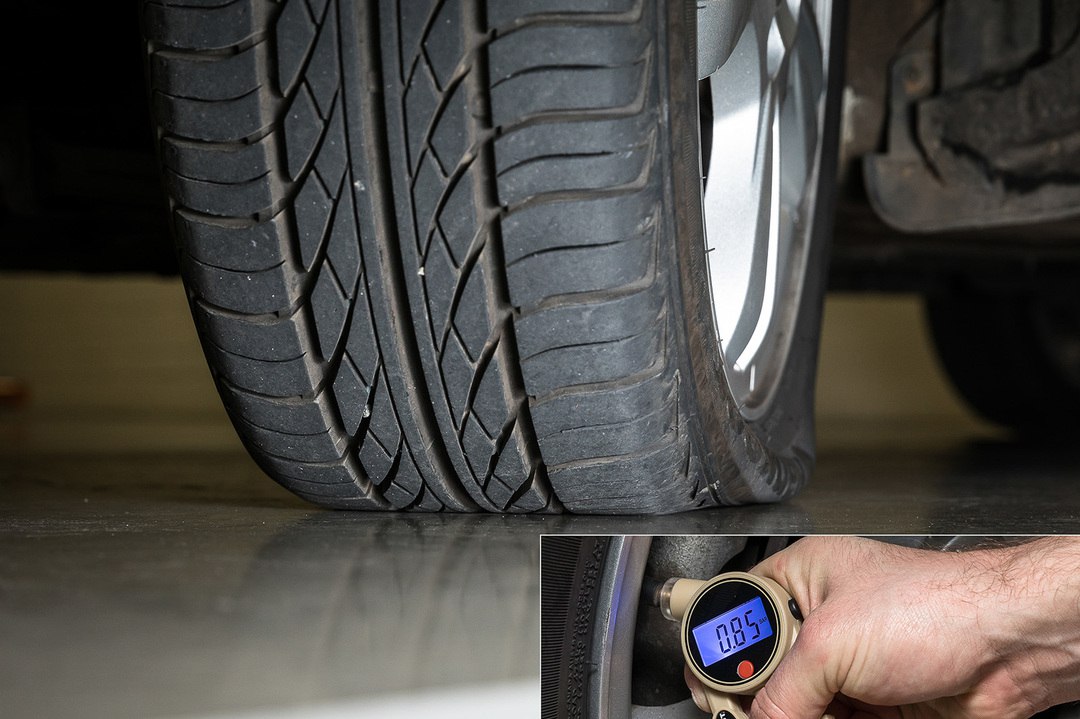 At the same time, you need to check all the wheels and should not skip any.
At the same time, you need to check all the wheels and should not skip any.
When temperature drops, the air in the wheel can also contract, reducing the tension. Therefore, in the cold season, you need to check the tension with a higher frequency.
To determine the tension level accurately, you need to park the car in the shade and stop starting the engine at least 15 minutes before. Otherwise, the displayed tension level is incorrect and should remove about 2psi of inflation.
Use a standard tension gauge.Finally, it would help if you used a standard tension gauge to determine the exact tension level of the tire. Yet, you should also note that some meters may display a tension difference of about +/- 3psi depending on the vehicle type.
Therefore, a quality tool is an indispensable tool to help you determine this correct tension level.
ConclusionMany reasons lead to the situation of brand new tires losing tension. Therefore, you always need to pay attention to the issue of checking the stress of your tires, even you just bought them to ensure safe driving.
Therefore, you always need to pay attention to the issue of checking the stress of your tires, even you just bought them to ensure safe driving.
With the information we have provided, you can clearly understand the importance of car tension and how to fix the brand new tire leaking air.
Photo www.tgamobility.co.uk
Often, tire pressure decreases gradually, and this process continues for several days. You inflate them to the required level, but the tires again pass air over time. In this case, you should contact the tire shop, where they will determine the cause of the pressure loss. There may be several. We will look at the problems with tubeless tires, since most modern cars are equipped with them. nine0009
Ivan Flyagin
Disk damage usually leads to its deformation. This comes from hitting the wheel at high speed on the edge of the pit or on a steep and hard bump.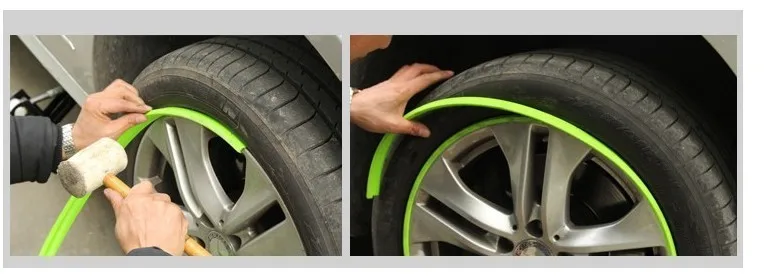 Due to the loose fit of the tire to the rim, a partial air leak occurs. Keep in mind that damage may be hidden on the inside of the rim, while the outside of the wheel will look brand new, without any visual flaws.
Due to the loose fit of the tire to the rim, a partial air leak occurs. Keep in mind that damage may be hidden on the inside of the rim, while the outside of the wheel will look brand new, without any visual flaws.
Another possible reason for the gradual loss of pressure in the tires is the depressurization of the valve (or nipple) as a result of mechanical impact, or the ingress of the smallest dust particles into it. If the mechanism is in good condition, then air can leak in the place where its valve is attached to the disk. Sometimes you can fix the problem by pumping the spool with a few sharp and short presses. nine0009
Quite often the tire “catches” a nail or other sharp and large object on the road, which safely gets stuck in the place of the puncture. In this case, it serves as a stopper, only not completely sealed, so the air will slowly but surely bleed. If a nail hits a tire with a camera, it instantly bursts, and at high speed this is fraught with an emergency.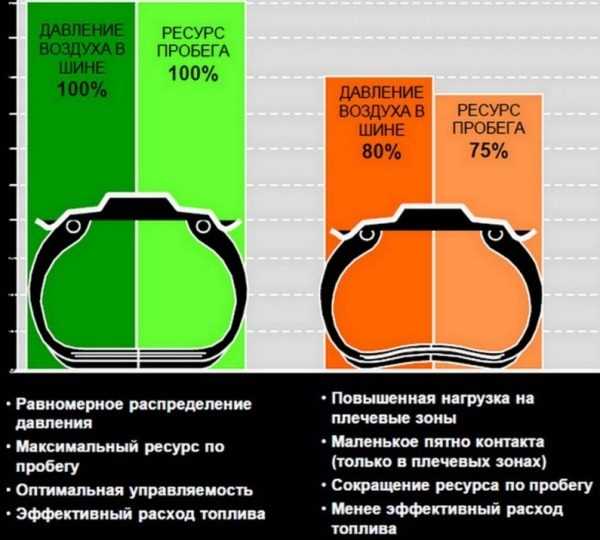
A tire can be damaged not only on the tread side, where the thickest and most durable rubber layer is located. Its side is also vulnerable to contact with sharp objects. Usually in this place there are cuts from friction on curbs, the edge of the track, protruding rebar and other hard and sharp protrusions. How quickly the rubber will lose air depends on the depth of the scratch. Usually damage to the sidewall causes irreparable damage to the tire, and it has to be replaced. nine0009
Whatever advanced rubber compound is used in the manufacture of a modern tire, in any case, its structure will respond to temperature changes to one degree or another. As a rule, in the cold, the rubber narrows, and as a result of a slight drop in pressure, the wheels sometimes have to be pumped up. Accordingly, at high temperatures, the opposite effect occurs and the pressure in the tires increases.
145232
How safe to park your car
27389
How safely to park your car
27389
Subscribe to Autovzglygs:
traffic safety, wheels, car service, repairs, accessories, tyres, tyres, maintenance
Most vehicles are fitted with tubeless wheels that maintain tire pressure during a puncture.
They guarantee safe driving even when flat, and with little damage they can hold their shape for several days. Despite their practicality, you should immediately look for the causes of wheel leaks. If you do not repair a punctured car tire in advance or do not fix warped alloy wheels, the operation of the car will lead to an emergency. nine0009
Since even tubeless tires flatten for no apparent reason, you need to carefully inspect the car and the condition of the wheels in order to detect a malfunction in advance. This will help to avoid a number of problems during the trip. Driving with flat tires adversely affects the performance of the machine. The vehicle has poor traction, the steering wheel pulls to the side with a bad tire, acceleration and braking are deteriorating. If the tires of the car are slowly deflated, this leads to increased fuel consumption. nine0009
To understand the problem, let's examine the reasons for which it releases air:
 A popular cause of air bleeding. You can ruin a tire by driving a car over a self-tapping screw, a metal sheet and other objects that are found on the roads. It can bleed due to stones found on unpaved surfaces. More often, a metal object gets stuck in the wheel tread without damaging the rim and alloy wheel. Since the screw or nail remains in the tread, the air escapes slowly, which allows you to safely drive to the service. Pulling out the item yourself, if it is not possible to immediately fix the wheel, is not worth it. This will lead to depressurization. nine0004
A popular cause of air bleeding. You can ruin a tire by driving a car over a self-tapping screw, a metal sheet and other objects that are found on the roads. It can bleed due to stones found on unpaved surfaces. More often, a metal object gets stuck in the wheel tread without damaging the rim and alloy wheel. Since the screw or nail remains in the tread, the air escapes slowly, which allows you to safely drive to the service. Pulling out the item yourself, if it is not possible to immediately fix the wheel, is not worth it. This will lead to depressurization. nine0004 
It is often difficult to find the reason why the air in the wheel bleeds slowly.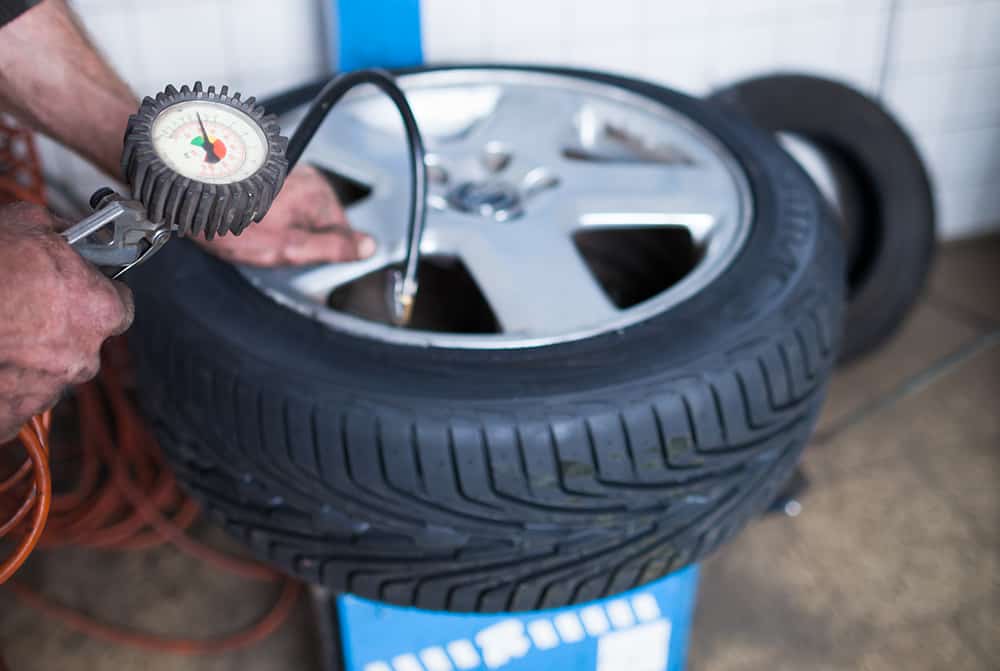 Even the masters can not always immediately detect a malfunction. You can find the problem yourself in the following way - pump over 1-2 atmosphere and listen to see if air comes out. If no sound is heard, then the wheel is wetted in a soapy solution and lowered into water. The area where air will begin to bubble will be the puncture site. nine0009
Even the masters can not always immediately detect a malfunction. You can find the problem yourself in the following way - pump over 1-2 atmosphere and listen to see if air comes out. If no sound is heard, then the wheel is wetted in a soapy solution and lowered into water. The area where air will begin to bubble will be the puncture site. nine0009
In cases where the wheel bleeds air on the car, but does not deflate when it is removed, you need to take apart and wipe the inside of the tire. In the presence of sharp objects, the fabric will catch on, indicating the puncture site.
The causes of rubber puncture near the nipple, on the rim of the alloy wheel or in the tread can be found using indirect causes: ; nine0004
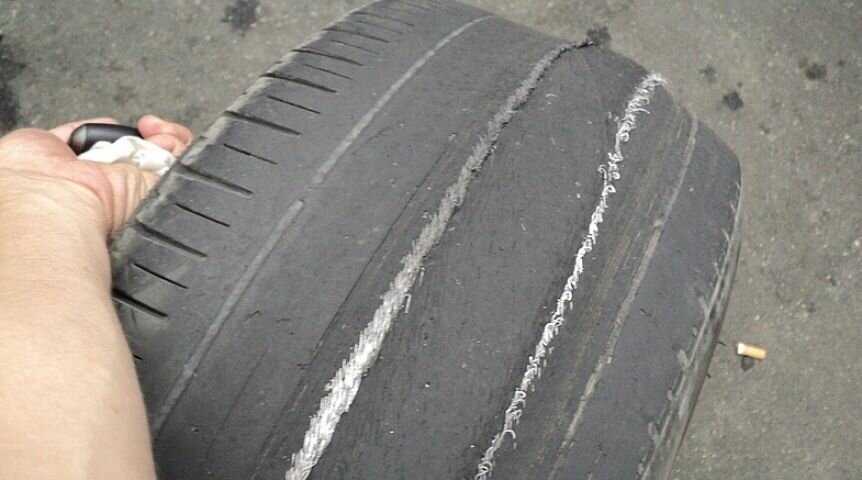
If the tire on the car began to slowly deflate as a result of a side cut, then such repairs are not easy to make even for masters. Unlike a tread puncture, the area near the rim of an alloy wheel is softer and thinner. This does not allow you to put a patch or install a harness. Even after removing the cause, the damaged wheel will slowly bleed under load. Also, repairing a side puncture is dangerous because it affects the durability of the tire. Therefore, with a strong side cut, it is better to change the wheel to a new one. nine0009
If the tread puncture is the cause of air bleeding, the tire can be easily repaired. It is important that in this case the rim of the cast disk is not damaged, and the hole size is no more than 4-5 mm. If a larger object hits, it will not be possible to repair the wheel on your own, so you need to sign up for a service station. If the tire on the car descends slowly, and the puncture diameter is several millimeters, a rubber band, glue and an awl will be needed for repair.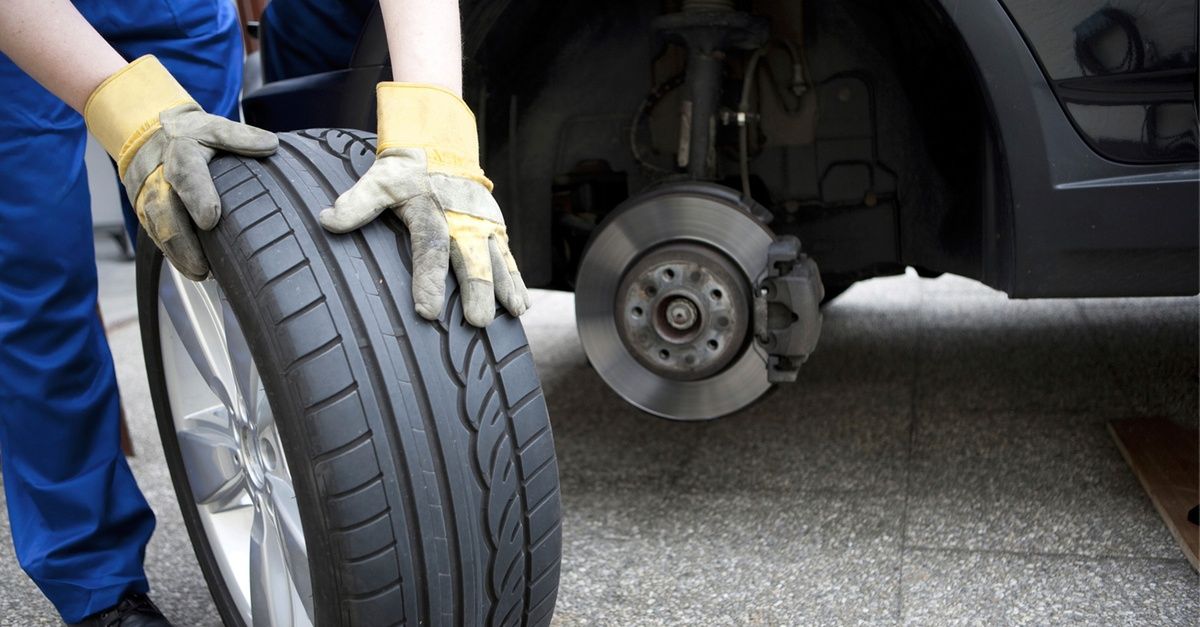
If the tire bead does not seal against the rim, the defect in the cast rim must be repaired first. There are many reasons why a dent appeared on the surface - due to falling into a hole at speed, upon contact with the curb. If you do not align the disk, the tire will slowly deflate, it may depressurize when driving a car. Dents are "rolled" in the service. You can fix the breakdown on your own on the road with the help of a heavy object - sometimes it is enough to hit the rim with a hammer to stop lowering. However, this is a temporary option. nine0009
If the rim is OK and the wheel continues to bleed, the problem may be in the spool. On the road, such a “puncture” can be corrected by pressing hard on the nipple. In case of deformation of the nipple, contact the specialists, as it needs to be changed.
Since the wheel itself may be the reason why the wheel began to deflate, let's look at the problem in more detail.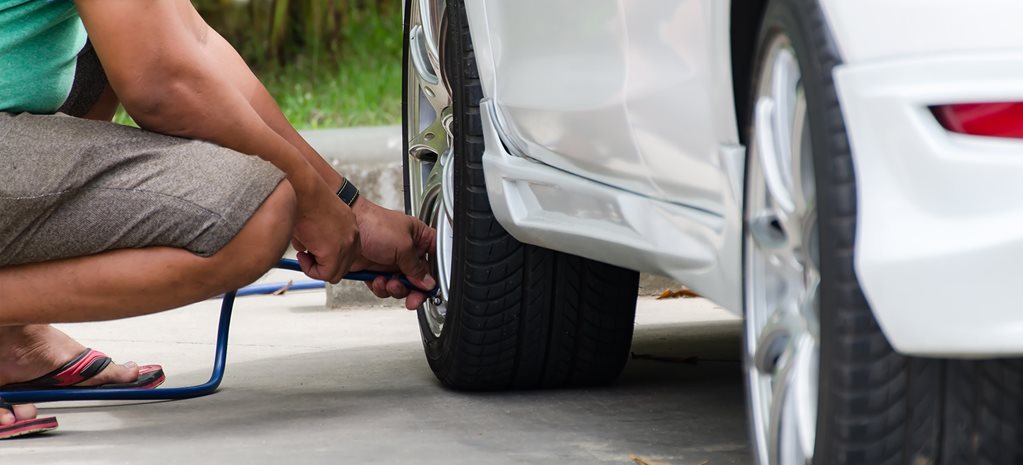 The rim is damaged when hitting a curb, due to old age or improper storage, which affects the tightness of its fit to the tire. Deformation of a cast wheel is also possible due to poor-quality alloy. nine0009
The rim is damaged when hitting a curb, due to old age or improper storage, which affects the tightness of its fit to the tire. Deformation of a cast wheel is also possible due to poor-quality alloy. nine0009
In case of advanced corrosion or mechanical damage to the rim, the disc is repaired or replaced with a new one. It is forbidden to pour sealant inside. It won't fix the rim problem, but it will definitely ruin the tire.
Winter Disc protection
Tires Goodyear UltraGrip Arctic 2 SUV
Winter Drive Protection Sound Comfort
Rating: nine0009
4.5
Tires Goodyear UltraGrip Ice 2
Winter Drive Protection
Tires Goodyear UltraGrip Performance+ SUV
Winter Drive Protection
Tires Goodyear UltraGrip Arctic 2
Winter Drive Protection Run On Flat Sound Comfort
Tires Goodyear UltraGrip Performance+
There are many reasons why a tire deflates.